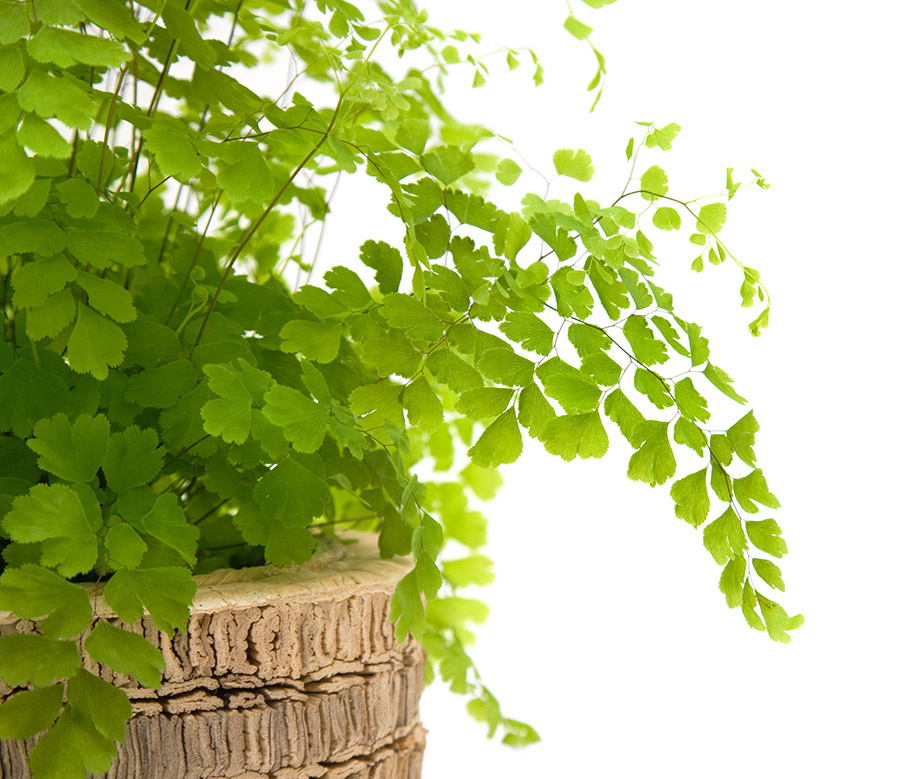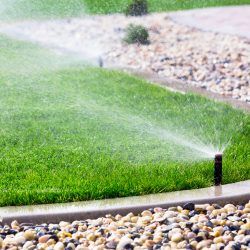Breathe Cleaner
Clean air, clean house.
Like most people, you probably spend much of your time indoors, so air quality matters. Furnishings, upholstery, synthetic building materials, and cleaning products can emit a variety of toxic compounds. Outdoor contaminants such as pollen, bacteria, and molds find their way indoors, adding to the air pollution in your home. Small, poorly ventilated spaces only make things worse.
Knowledge Is Power.
There is an easy, affordable way to combat indoor pollutants naturally. Studies show plants are great for purifying the air in your home. Adding potted plants to a room reduces the amount air particulates that contain toxins. Plants absorb some of these particulates from the air and take in carbon dioxide, which is then processed into oxygen through photosynthesis. Microorganisms that are present in the soil purify the air as well.
Let’s Do This!
Some find houseplant care intimidating, but you’d be surprised how many are relatively easy to care for. Inspired by NASA research, the following are some examples of great air purifying plants that need minimal care:
SPIDER PLANT
Removes formaldehyde, trichlorethylene, and xylene.
Provide medium to bright, indirect light. Allow soil to dry between watering.
DRACAENA
Removes benzene, formaldehyde, and trichloroethylene.
Provide bright indirect light. Allow soil to dry before watering.
FIG
Removes benzene, formaldehyde, trichloroethylene.
Provide bright, indirect light. Allow soil to dry before watering.
PEACE LILY
Removes ammonia, benzene, formaldehyde, and trichloroethylene.
Provide bright, indirect light. Keep soil evenly moist.
BOSTON FERN
Removes formaldehyde and xylene.
Provide bright, indirect light. Keep soil barely moist.
SNAKE PLANT
Removes benzene, formaldehyde, trichloroethylene, and xylene.
Bright, indirect light to low light. Allow to dry between watering (does not like to stay wet).
BAMBOO PALM
Removes benzene, formaldehyde, and trichloroethylene.
Provide bright, indirect to medium light. Can also handle low light conditions. Keep soil barely moist.
ALOE
Removes formaldehyde.
Provide bright, indirect light. Allow soil to dry completely between watering.
GOLDEN POTHOS
Removes formaldehyde, carbon monoxide, and benzene.
Provide bright, indirect to medium light. Can also handle low light conditions. Allow soil to dry between watering.
ENGLISH IVY
Removes formaldehyde.
Provide bright, indirect light. Keep soil somewhat moist.
RUBBER PLANT
Removes carbon monoxide, formaldehyde, and trichloroethylene.
Provide bright, indirect to medium light. Allow soil to dry between watering.
CHINESE EVERGREEN
Removes benzene, carbon monoxide, formaldehyde, and trichloroethylene.
Provide bright, indirect to low light. Allow soil to dry between watering.
GARDEN MUM
Removes ammonia, benzene, formaldehyde, and xylene.
Provide bright light and allow soil to dry before watering.
TERMINOLOGY
Ammonia is found in window cleaners, floor wax, and smelling salts.
Xylene is found in paints, lacquers, adhesives, rust preventers, thinners, gasoline, and permanent markers.
Formaldehyde is a byproduct of the combustion of natural gas, kerosene, wood, and tobacco.
Benzene is found in paints, polishes and waxes, auto care products, home fuels, adhesives and sealants, and lighter fluid.
Trichloroethylene is found in printing ink, wax paper, facial tissues, paper towels, particle board, plywood, and synthetic fabrics.
Resources: Dr. Bill Wolverton, Environmental Scientist
https://ntrs.nasa.gove/archive/nasa/casi.ntrs.nasa.gov
https://www.epa.gov/sites/production/files/signpost/index.html




